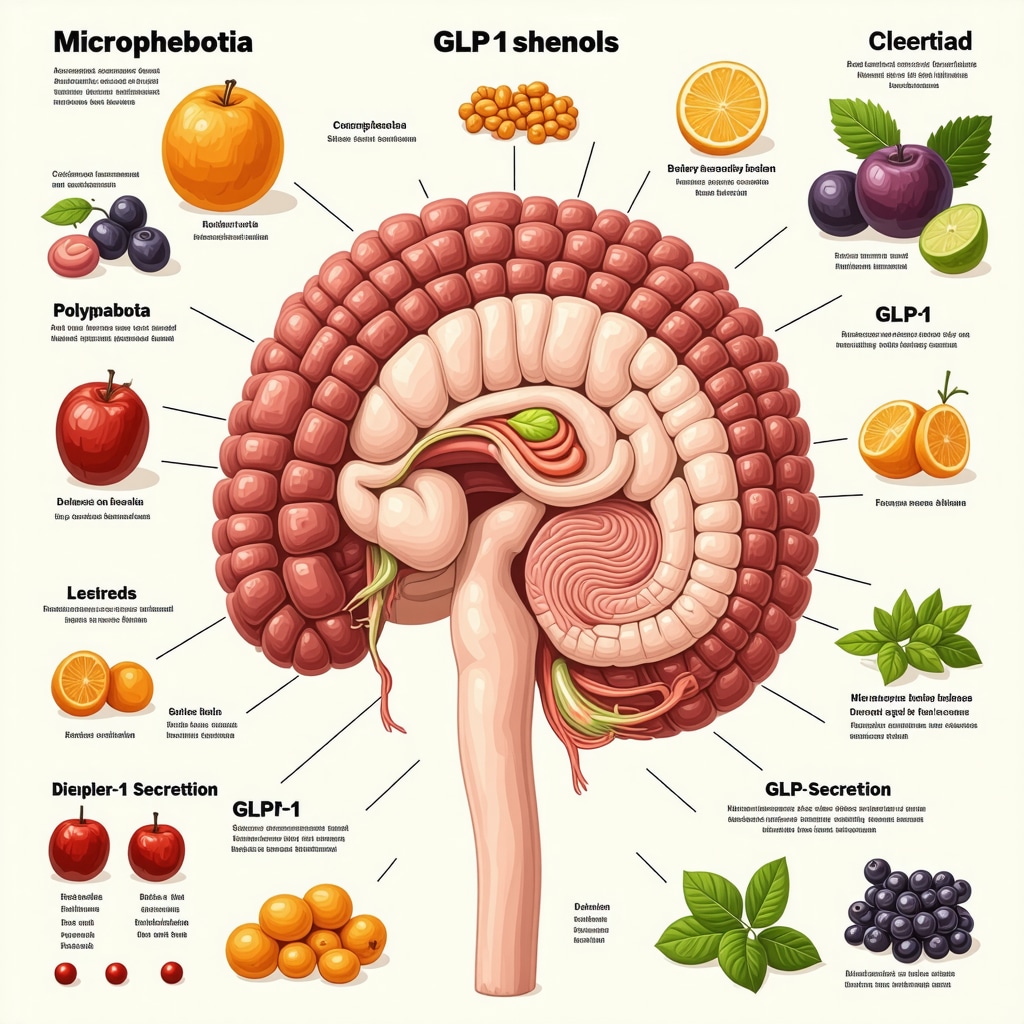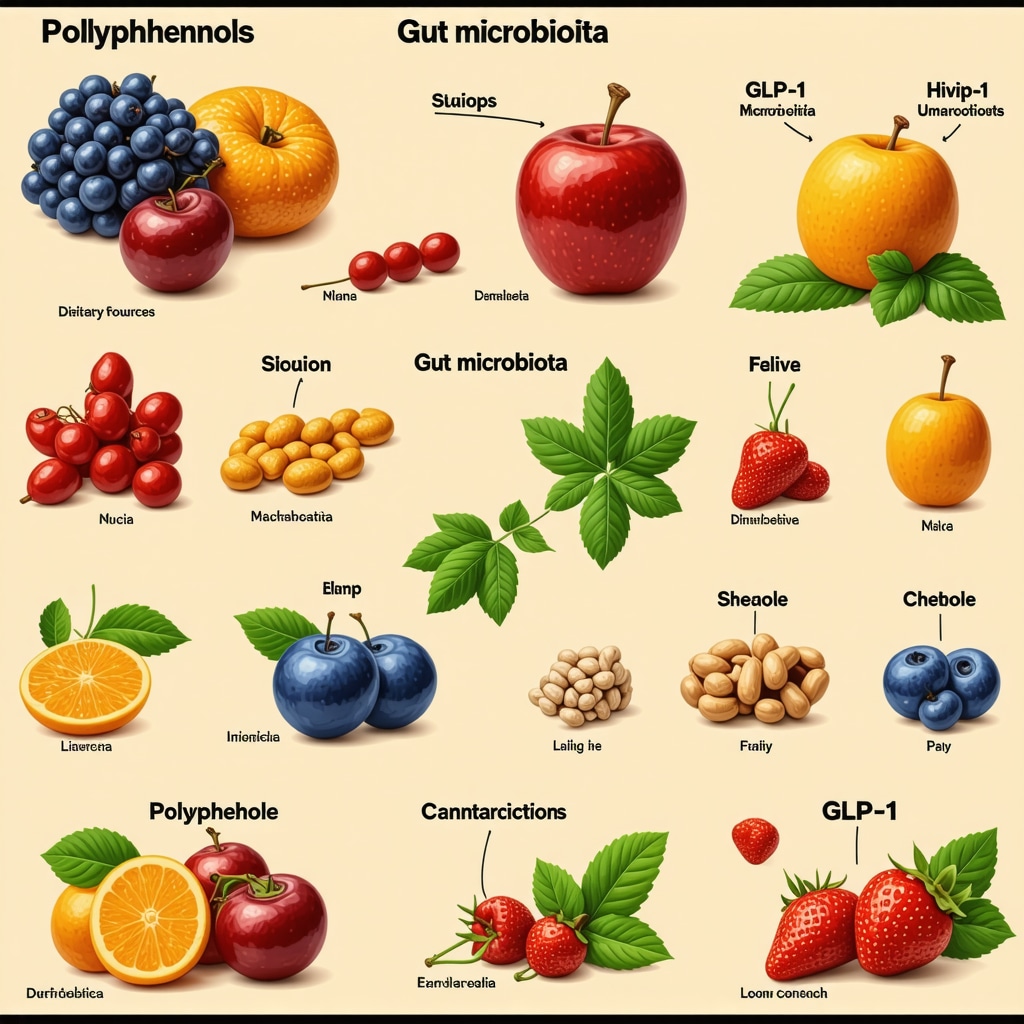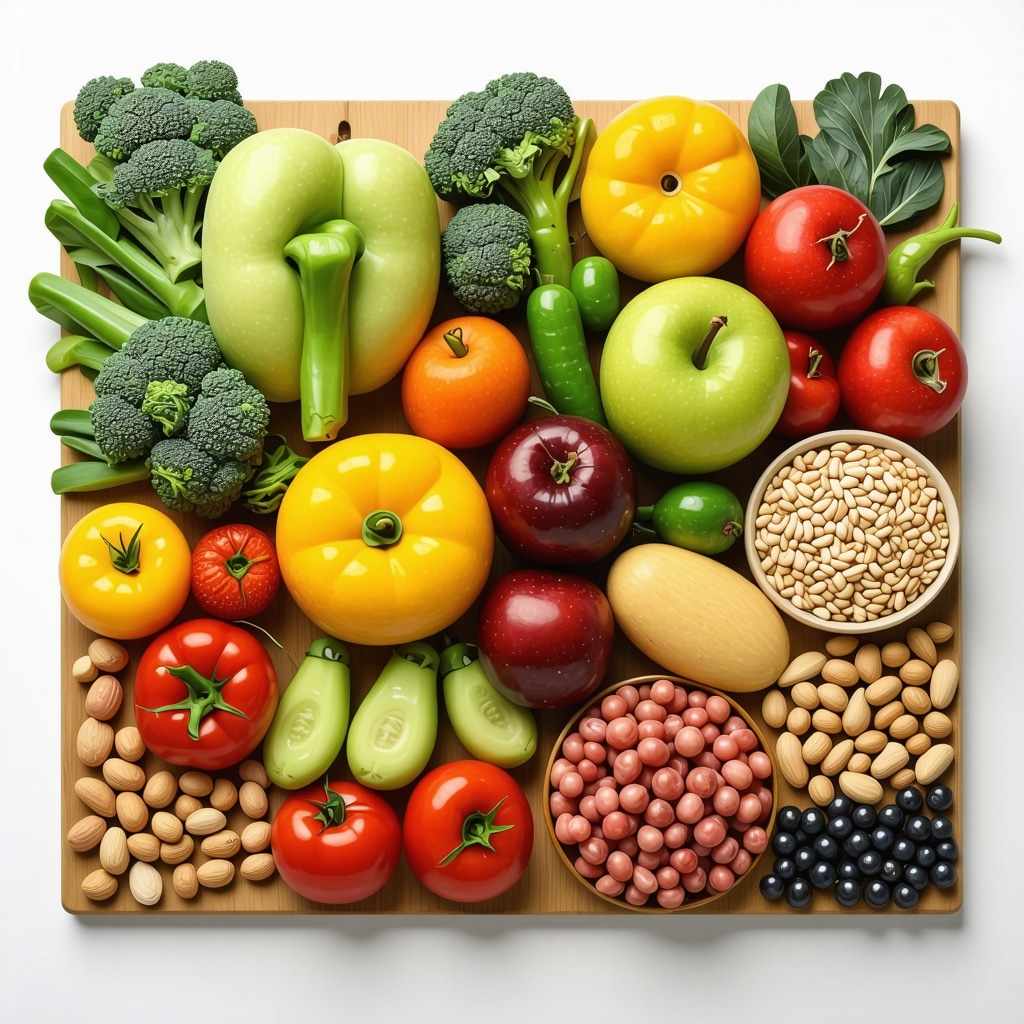Are You Ready to Unlock the Secret Sauce for Fat Loss in 2024?
Imagine shedding stubborn pounds effortlessly, feeling energized, and knowing you’re nourishing your body with the best foods tailored for GLP-1 support. Sounds like a dream? Well, buckle up, because the latest insights suggest that your plate might hold more power than you think. As a seasoned columnist in health and wellness, I’ve seen the tides shift towards smarter, food-based strategies that complement medication and boost results. Let’s delve into how you can turn your diet into a fat-burning powerhouse this year.
Why GLP-1 Is the Star of the Show
GLP-1, or Glucagon-like Peptide-1, is a hormone that plays a starring role in appetite regulation and insulin secretion. Think of it as your body’s natural satiety signal, telling you when you’re full and helping to stabilize blood sugar. With the advent of medications like Ozempic and Wegovy, understanding how to support GLP-1 naturally has become more vital than ever. So, what foods enhance this hormonal pathway? Let’s find out.
Foods That Make Your Body Say “More, Please!” to Fat Loss
First, it’s essential to focus on foods rich in fiber, healthy fats, and lean proteins. These elements not only satisfy your hunger but also support GLP-1 secretion. Think of them as your culinary allies in the quest for a leaner you.
Can Food Be Your Secret Weapon in the Fat Loss Fight?
Absolutely! For instance, incorporating foods like avocado, nuts, and seeds can boost satiety and provide essential nutrients. Additionally, high-fiber vegetables such as broccoli, cauliflower, and leafy greens slow digestion and keep you feeling full longer. Don’t forget the power of lean proteins like chicken, fish, and plant-based options, which support muscle maintenance and metabolic health.
Snack Smart: Foods to Support Your GLP-1 and Keep Cravings in Check
Snacking doesn’t have to sabotage your goals. Opt for a handful of almonds or a crunchy apple with peanut butter. These choices stabilize blood sugar and curb overeating. Remember, combining good nutrition with medication like semaglutide can accelerate your fat loss journey, as noted by experts in the field (source).
Food for Thought: Is Your Plate Supporting or Sabotaging Your Goals?
As you plan your meals, ask yourself: Are these foods supporting my GLP-1 levels and fat loss? If not, it’s time for a dietary refresh. Think colorful, nutrient-dense, and balanced. And if you’re curious about how to fine-tune your nutrition plan, don’t hesitate to explore tailored strategies that maximize your medication’s effectiveness.
Interested in more expert tips? Dive into our comprehensive guide on doctor-recommended weight loss diets for 2024.
Now, over to you—what’s your favorite fat-burning food? Drop your thoughts in the comments below and let’s keep the conversation going!
Are You Missing Out on Natural Ways to Boost Your Fat Loss?
In the ever-evolving world of weight management, understanding how your diet influences hormonal pathways like GLP-1 can make all the difference. As experts continue to uncover the synergy between nutrition and medication, one question stands out: how can we leverage food to maximize fat-burning potential? The answer lies in selecting nutrient-dense, hormone-friendly foods that support your body’s natural satiety signals and metabolic processes.
Can Food Alone Turn the Tide in Your Weight Loss Battle?
It’s a compelling thought—food as your secret weapon. When you incorporate foods rich in fiber, healthy fats, and lean proteins, you stimulate GLP-1 secretion, helping you feel fuller longer and reducing overeating. For example, avocados, nuts, and seeds are not only satisfying but also packed with essential nutrients that support metabolic health. Meanwhile, high-fiber vegetables like broccoli, cauliflower, and leafy greens slow digestion and promote sustained satiety. Combining these with lean proteins such as fish, chicken, or plant-based options creates a powerful, balanced plate that works in harmony with your medication, like semaglutide, to support fat loss (source).
What if Your Plate Could Be the Missing Link in Your Fat Loss Strategy?
Imagine transforming your meals into fat-burning fuel by making simple but strategic food choices. This isn’t just about calorie counting; it’s about optimizing your diet to reinforce the hormonal signals that suppress appetite and boost metabolism. Think colorful, nutrient-dense foods that align with your weight loss goals, and consider customizing your nutrition plan to support your medication regimen. Want to learn how expert-designed plans can elevate your results? Check out our detailed guide on doctor-recommended weight loss diets for 2024.
Additionally, integrating foods that support gut health, like fermented vegetables and probiotics, can further enhance hormonal balance and satiety. Do you think your current diet is giving your body the support it needs? If not, it might be time for a dietary refresh that aligns with your weight loss medications and long-term wellness goals.
Share your favorite fat-burning foods or ask questions in the comments below. Remember, your diet is more than just fuel—it’s a strategic tool in your weight loss arsenal!
Harnessing the Power of Nutritional Timing to Amplify GLP-1 Effects
One of the most nuanced yet impactful strategies involves the timing of carbohydrate intake. Recent research indicates that consuming complex carbs and high-fiber foods earlier in the day can naturally stimulate GLP-1 secretion, thereby enhancing satiety and moderating appetite throughout the afternoon and evening (source). This approach leverages the body’s circadian rhythms, aligning meal times with hormonal peaks to optimize fat-burning potential.
The Role of Polyphenols and Phytochemicals in Hormonal Regulation
Emerging evidence suggests that polyphenol-rich foods—think berries, dark chocolate, and green tea—may influence GLP-1 pathways beyond their antioxidant properties. These compounds can modulate gut microbiota, which in turn impacts enteroendocrine cells responsible for hormone secretion. Incorporating such foods into your diet not only diversifies nutrient intake but also supports a resilient hormonal environment conducive to sustained weight management (source).
What is the impact of gut microbiota diversity on GLP-1 responsiveness?
Gut microbiota diversity appears to correlate positively with GLP-1 sensitivity, meaning a more varied microbiome can enhance hormonal responses to food. Strategies like fermented foods, prebiotics, and targeted probiotics are gaining attention for their potential to fine-tune this axis, creating a more responsive hormonal landscape that promotes fullness and metabolic health. Integrating these into your dietary plan could be a game-changer in your fat loss journey, especially when combined with medical therapies.
Designing a Holistic, Hormone-Friendly Meal Plan for 2024
Transitioning from theory to practice requires a strategic approach. A comprehensive meal plan should emphasize nutrient density, meal timing, and microbiome support. For instance, starting your day with a protein-rich, fiber-loaded breakfast like Greek yogurt with chia seeds and berries can set the stage for stable blood sugar and sustained GLP-1 secretion. Lunch and dinner should include lean proteins, healthy fats, and fibrous vegetables, strategically spaced to maintain hormonal balance. Remember, consistency and personalization are key—what works for one individual may need tweaking for another.
Advanced Monitoring Techniques for Optimized Fat Loss
For those serious about mastering their hormonal landscape, integrating advanced monitoring tools like continuous glucose monitors (CGMs) can provide real-time feedback on how your diet influences blood sugar and, indirectly, GLP-1 levels. Coupled with periodic hormone panels, this data-driven approach allows for precise adjustments, transforming your fat loss plan into a dynamic, responsive system.

Image prompt: A detailed infographic showing the interaction between gut microbiota, polyphenols, and GLP-1 hormone secretion, with emphasis on dietary sources and timing.
Mastering Nutritional Timing: The Hidden Key to Enhancing GLP-1 Secretion and Accelerating Fat Loss
Recent studies emphasize that not just what you eat, but when you eat it, can significantly influence hormonal responses like GLP-1 secretion. Consuming complex carbohydrates and fiber-rich foods earlier in the day aligns with your body’s circadian rhythms, promoting sustained satiety and better blood sugar regulation throughout the day (source). This strategic approach leverages the body’s natural hormonal peaks, creating an optimal environment for fat burning.
Harnessing Polyphenols and Phytochemicals: Nature’s Hormone Modulators for Weight Management
Polyphenol-rich foods such as berries, dark chocolate, and green tea are more than antioxidants—they actively modulate gut microbiota and enteroendocrine cell activity, thereby influencing GLP-1 secretion. These bioactive compounds support gut health, hormonal balance, and metabolic resilience, making them essential allies in a comprehensive weight management plan (source).
How Do Gut Microbiota Diversity and Phytochemicals Interact to Enhance GLP-1 Responsiveness?
Emerging research indicates that a diverse gut microbiome enhances the responsiveness of GLP-1 pathways. Fermented foods, prebiotics, and targeted probiotics can foster this diversity, creating a more receptive hormonal environment for satiety and metabolism. Incorporating these elements into your diet, especially alongside polyphenol-rich foods, can potentiate the effects of medications like semaglutide, leading to more effective and sustainable fat loss (source).
Integrating Advanced Strategies for a Holistic, Hormone-Friendly Approach in 2024
Developing a comprehensive plan involves timing, nutrient density, and microbiome support. For example, starting your day with a breakfast of Greek yogurt, chia seeds, and berries can prime your hormonal environment for the day. Lunch and dinner should focus on lean proteins, healthy fats, and fiber-rich vegetables, spaced strategically to maximize hormonal balance and fat oxidation. Personalization and consistency are crucial—working with a healthcare professional to tailor these strategies can magnify results.
Visualizing the Hormonal Symphony: The Impact of Food Choices on GLP-1 and Gut Microbiota

Image prompt: An infographic illustrating how polyphenols and phytochemicals influence gut microbiota diversity and GLP-1 secretion, emphasizing dietary sources and timing for optimal fat loss.
Expert Insights & Advanced Considerations
1. The Synergy of Microbiome Diversity and Hormonal Response
Recent research underscores how a diverse gut microbiota enhances GLP-1 sensitivity, amplifying satiety signals and metabolic efficiency. Incorporating fermented foods, prebiotics, and targeted probiotics can foster this diversity, creating a hormonal environment conducive to sustained weight management.
2. Nutritional Timing as a Hormonal Modulator
Strategic meal timing, especially consuming complex carbohydrates and fiber-rich foods earlier in the day, aligns with circadian rhythms and optimizes GLP-1 secretion. This approach not only enhances satiety but also stabilizes blood sugar levels, supporting fat loss efforts.
3. Polyphenols and Phytochemicals as Hormonal Enhancers
Foods rich in polyphenols, such as berries, dark chocolate, and green tea, actively influence gut microbiota and enteroendocrine cells, boosting GLP-1 secretion. These compounds contribute to hormonal resilience, making them invaluable in comprehensive weight management plans.
4. Integrative Monitoring for Precision Fat Loss
Utilizing advanced tools like continuous glucose monitors (CGMs) and hormone panels allows for real-time feedback and personalized adjustments. This data-driven approach ensures that dietary strategies are effectively supporting GLP-1 pathways and overall fat loss.
5. Personalized Nutrition Strategies
Tailoring meal plans to individual hormonal responses, microbiome profiles, and medication regimens maximizes results. Working with healthcare professionals to craft such personalized strategies can significantly enhance the efficacy of weight loss interventions.
Curated Expert Resources
- Nutrition and Metabolism Journal: Provides cutting-edge research on polyphenols, microbiota, and hormonal regulation, essential for understanding complex interactions in weight management.
- Clinical Nutrition Journal: Offers insights into nutritional timing and circadian influences on hormones like GLP-1, guiding strategic meal planning.
- PubMed Central: A comprehensive database of peer-reviewed studies on microbiome diversity and metabolic health, invaluable for evidence-based practice.
- American Journal of Clinical Nutrition: Features research on dietary polyphenols and their role in gut-hormone interactions.
- Guidelines from the Obesity Society: Provides clinical recommendations on integrating microbiome and nutritional strategies with pharmacotherapy for optimal outcomes.
Final Expert Perspective
Harnessing the full potential of fat loss in 2024 requires a nuanced understanding of how diet influences hormonal pathways like GLP-1. The intersection of microbiome diversity, nutritional timing, and bioactive compounds offers a sophisticated toolkit for clinicians and enthusiasts alike. By integrating these advanced insights with personalized monitoring and professional guidance, you can elevate your weight management strategy from basic to breakthrough. Dive deeper into these topics and share your insights—your expertise could be the catalyst for someone’s transformative journey.


This article really highlights how powerful food choices can be in supporting hormonal pathways like GLP-1 for fat loss. I’ve personally found that incorporating high-fiber vegetables and healthy fats like avocados makes a noticeable difference in satiety and energy levels throughout the day. What I find interesting is how timing meals, especially earlier in the day, can leverage our circadian rhythms to amplify these hormonal responses. I’ve been playing around with adjusting my carbohydrate intake and have noticed improved blood sugar stability and less mid-afternoon cravings. Has anyone experimented with meal timing or specific polyphenol-rich foods to optimize their fat-burning potential? I’d love to hear success stories or practical tips from others trying to align their diet with these hormonal strategies.